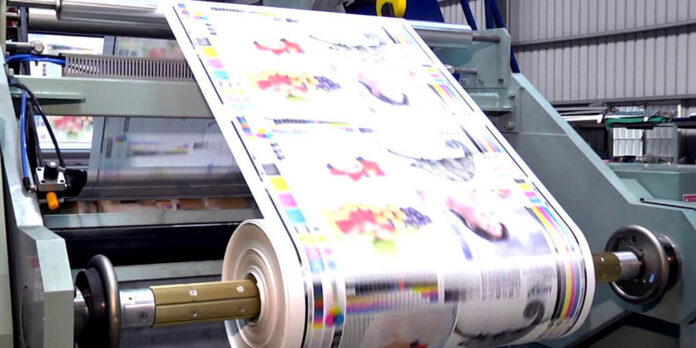
The direct laser is the top and most used type of flexo engraving equipment in the market. Direct laser engraving for flexographic printing helps eliminate costly outlays for several stages of processing. Such issues are commonly associated with the use of conventional photopolymer technologies for making printing plates.
Definition of direct laser engraving
This refers to a process of modeling for the surface of the flexo printing plate using ablation. It also involves the use of high-energy laser beams. The beams help create a raised image. The role of the high-powered lasers makes it different from the thin layer found of digital photopolymers.
Flexographic engraving systems
These systems use either single or multiple high-powered carbon dioxide lasers. They can also use fiber lasers. The role of the lasers is to engrave constant plates in one phase directly. This happens when the laser selectively ablates the area that’s not designed to be printed on the elastomer plate. Doing so helps to produce a surface ready to be printed on without using any chemicals or exposures.
The history of flexo engraving
Originally, engraved elastomer sleeves were only used for line work and coarse line screens. The reason why this was so is that there were limited elastomer compounds. The undeveloped laser technology at the time also played a significant role in this. However, the development of high-performance elastomers and advanced laser capabilities has led to establishing new quality levels. Currently, modern engraving technologies permit for more than 4000 dpi of resolutions.
Additionally, recent technological advances have made it possible for the printing industry to exploit direct laser engraving benefits with better efficiency.
Advantages of direct laser engraving
- The high-powered laser beams help to create high-quality prints
- This technique is precision-controlled. This helps to ensure that the products are amazing
- The method can employ the use of electronic undercutting to enhance the printed image’s quality
- This flexo engraving technique can be applied in label printing, flexible and specialty packaging, and corrugated printing.
- It provided better depth and relief options
- It is free from distortion, seamless and it allows for continuous printing
- It offers fewer print defects, and it is highly cost-efficient
- It offers increased printing speed
Digital laser engraving is an excellent technique for applications that demand high durability, tight regulations, and enhanced ink densities.
Definition and benefits of flexo printing
Flexographic printing is a printing process that uses flexible relief sleeves or plates. Most people refer to it as a modern version of letterpress printing.
It offers numerous advantages like fast production of print. This benefit is influenced by the fact that it uses multiple plates and fast-drying ink. It also allows you to use several substrates like paper, film, plastic, and cardboard.
Conclusion
The most common types of printed products using flexo printing technology are corrugated boxes and flexible packaging. It is also used to manufacture retail and shopping bags, milk cartons, flexible plastics, and containers, among several other products. Its applications are limitless because of the versatility of flexo technology.





